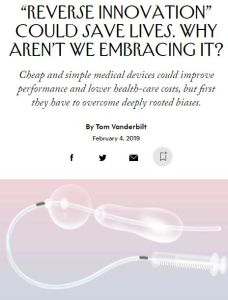
Article
"Reverse Innovation” Could Save Lives. Why Aren't We Embracing It?
Cheap and simple medical devices could improve performance and lower health-care costs, but first they have to overcome deeply rooted biases.
The New Yorker,
2019
Recommendation
Doctors and nurses practicing in developing countries prove, often movingly, the old adage about necessity being the mother of invention – finding simple, affordable solutions that save lives and improve outcomes under difficult circumstances. Writing for the New Yorker, Tom Vanderbilt investigates innovative devices and techniques making their way from the developing world to medical practice in the West. Vanderbilt’s story touches on questions about access, economic motives in health care and bigotry to explain why these inventive solutions often face resistance in the developed world.
Summary
About the Author
Tom Vanderbilt is the best-selling author of You May Also Like: Taste in an Age of Endless Choice and Traffic: Why We Drive the Way We Do.
By the same author
Book
















Comment on this summary